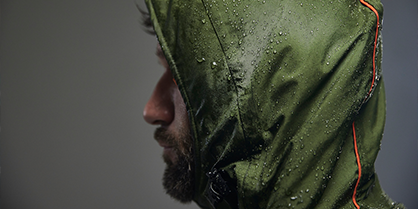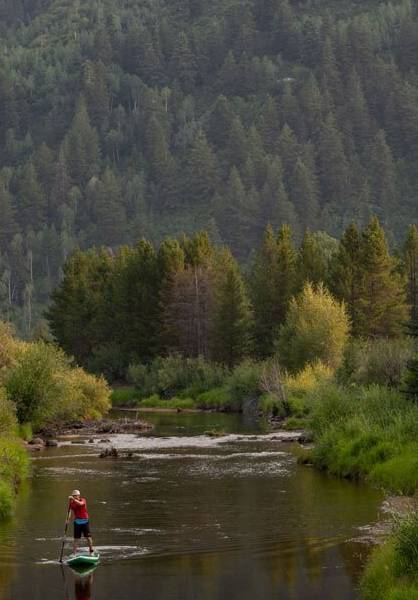
Winter can feel like the end of the world for anybody who enjoys running outdoors. It’s darker, colder, wetter, and just generally everything that you look to avoid when heading out for a bit of a jog. However, running outdoors in winter is also a fantastic way to stay fit, enjoy time in the fresh air, and generally resist the urge to cosy up in a blanket for the next couple of months. If you can bring yourself to try it, we’re pretty certain you’ll enjoy it more than you think.
Once you’ve overcome the initial hurdle of psyching yourself up for an outdoor run in winter, it is important to remember that it won’t be quite the same as a nice summer evening jaunt. Running outdoors after winter typically means that you will be running in the dark and in the cold and these conditions bring their own important safety considerations. To help you out, we’ve shared our essential safety tips so that you can keep enjoying your running this winter.
Pay Attention To Your Body
Very few of us manage to make it through winter without feeling a little worse for wear. The colder months are a total breeding ground for coughs and colds and these seemingly small illnesses can quickly develop into something a lot nastier if you don’t allow your body to rest. It can be tempting to try and ride it out and push through a stuffy nose or slight temperature, but it’s much safer to give your run amiss if you’re not feeling 100%. Skipping a run or two is not the end of the world if you’re under the weather and you’ll quickly be able to continue your progress when you’re back to feeling more like yourself.
Choose A Well-Lit Route
If you are feeling good and running outdoors in winter is very much on the cards, the first thing you’ll need to think about is your route. Dark evenings are a given at this time of year and if you cannot fit your run in during the day, it’s pretty much guaranteed that you’ll find yourself running in the dark. It’s important to account for these conditions when planning your route. Not only do you never know who is out and about, but it is also much harder to see possible hazards like icy or uneven patches. For this reason, stick to well-lit areas and paths that you know well.
Stay Visible
It’s equally important that other people can see you when running outdoors in winter. Running is never a fashion show and it’s vital that you wear clothing that will allow pedestrians and drivers to see you from some way in the distance. At the very minimum, you should make sure that you are wearing light-coloured and reflective clothing. However, we recommend investing in a comfortable head torch and/or ankle and wrist lights for total visibility.
Wear The Right Layers
When it comes to what to wear running in winter, the type of clothing you are wearing is as significant as the colour. While your body temperature will quickly increase as you work up a sweat, you’ll still need a couple of layers to fend off the cold and prevent injury. Invest in a good thermal base layer like the Red Original performance t-shirt for men/women and add a comfortable mid layer on top too. If it’s wet as well as chilly, it’s a good idea to throw on a lightweight waterproof jacket and an extra layer for your head like a beanie or headband is also advisable when it’s really cold or windy.
Warm Up First
It’s much easier to pick up an injury if your muscles are cold so make sure that you complete a warm-up before heading outside and putting one foot in front of another. You don’t have to do too much - a jog on the spot and a few basic stretches should do it - but it’s important that you start to get the blood pumping ahead of time. As well as helping to prevent injuries and strains, warming up also helps you to get in the right frame of mind for a positive and enjoyable run. It’s a win-win.
Leave The Headphones At Home
You might not want to hear this, but you should really leave the headphones at home when running outdoors in winter. When it’s dark and hard to see, you might not always see cars or pedestrians approaching. If you’ve got music pumping through your ears, you might not be able to hear them either which could lead to a pretty serious accident. Your ears are remarkably good at helping you be more in tune with what’s going on around you so resist the urge to have headphones in a prioritise having a full grip on your surroundings.
Run With A Buddy
One of the best things you can do when running outdoors in winter is to run with a friend or in a group. Not only is running together a great safety precaution, strength in numbers also helps you to stay motivated even when the thought of heading out in the dark and cold is pretty unappealing. Running will start to become a bit of a social occasion and something that you look forward to, even when the temperatures dip!
Start Slow
When you’re setting off, start slow. The increased chance of coming across a hazard means that winter is not the time to ramp up the pace. Speed really isn’t important and it’s certainly not worth the risk of an injury, particularly when you’re just running for fun or building up your fitness ahead of an event in the summer. If you have got your heart set on a higher-intensity run, mix in a bit of work on the treadmill or in the gym when you have the urge to go fast.
Wrap Up Warm Afterwards
To avoid muscle soreness, injury or fatigue, it’s important that you keep your muscles nice and warm when you have finished your fun. This can be tricky in winter when it’s colder outdoors, particularly if you fancy yourself as a bit of a trail runner or have travelled some distance in the car to get to the start of your route and won’t be returning to the warmth of your home straight away. Wrap up warm in a changing robe to travel back and keep a hot drink in an insulated bottle in your car if you might be hanging around and chatting to friends afterwards. This way, your body can gradually return to a normal temperature, avoiding the damage that might be caused to your muscles from the sudden shock that exposure to the cold might cause.
And don’t forget, the main thing is that you enjoy your running! If you find that running outdoors in winter isn’t for you, don’t beat yourself up. Find a different form of exercise that you can enjoy for a couple of months and look forward to getting back to it properly when it’s warmer and lighter.
For more tips and information about what to wear for running in winter, don’t hesitate to get in touch with the Red team.








.webp?v=1701702999170&options=w_768,c_fill)
.webp?v=1701703049782&options=w_768,c_fill)



